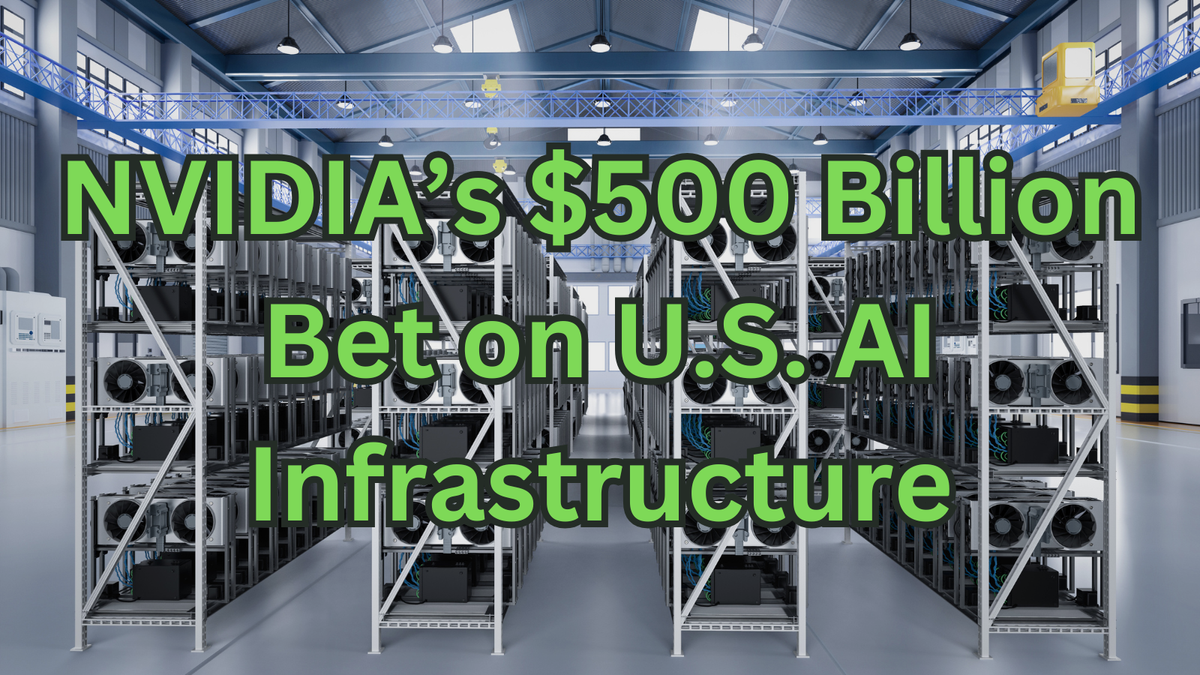Is NVIDIA’s $500 Billion Bet on U.S. AI Infrastructure the Future of Tech Dominance?

The AI arms race just went nuclear. While tech giants scramble to launch chatbots and image generators, NVIDIA is digging deeper — much deeper — to lay the foundation for America’s AI future. The chipmaker just pledged a staggering $500 billion to build next-gen AI infrastructure across the U.S., including a cutting-edge supercomputer production hub in Texas. But will this moonshot investment cement American leadership in AI — or spark new debates about tech monopolies and sustainability? Let’s dive in.
🚀 The $500 Billion Blueprint
NVIDIA’s plan isn’t just about manufacturing more GPUs. It’s a full-scale assault on America’s AI infrastructure gap. Here’s what’s coming:
- Texas-Sized Supercomputers: A new Texas facility will produce NVIDIA’s DGX SuperPOD systems — AI supercomputers that train models like ChatGPT.
- Job Creation: Thousands of high-skill engineering and manufacturing roles, with a focus on “reshoring” tech production.
- Partnerships: Collaboration with universities and startups to accelerate AI R&D.
For context, $500 billion is:
- More than Apple and Microsoft’s combined 2023 R&D budgets
- Enough to build 50 next-gen semiconductor fabs
- Nearly 1% of U.S. GDP
🤠 Why Texas?
Texas isn’t just about barbecue and oil rigs anymore. NVIDIA’s choice reflects:
- Business-Friendly Policies: No state income tax and streamlined regulations
- Energy Infrastructure: Critical for power-hungry AI data centers
- Tech Talent: Proximity to universities like UT Austin and Rice
“This isn’t just a factory — it’s a statement,” said NVIDIA CEO Jensen Huang in the announcement. “The future of AI will be built on U.S. soil.”
🌎 The Bigger Picture: AI’s New Industrial Revolution
NVIDIA’s move comes as:
- Global Competition Heats Up: China plans to spend $1.4 trillion on AI by 2025
- U.S. CHIPS Act Gains Momentum: $52 billion in federal subsidies for semiconductor manufacturing
- AI Compute Demand Soars: Training advanced models now requires 100x more power than 5 years ago
But there’s a catch: Building AI infrastructure at this scale requires unprecedented resources — from rare earth minerals to water for cooling systems. Can the U.S. scale sustainably?

⚖️ Implications and Challenges
✅ The Good
- Tech Sovereignty: Reduced reliance on overseas chip production
- Job Market Boost: Potential for 50,000+ indirect jobs in construction and logistics
- Research Acceleration: Universities gain access to state-of-the-art supercomputers
⚠️ The Risks
- Market Dominance: NVIDIA already controls 88% of AI chip market
- Environmental Impact: AI data centers could consume 4% of global power by 2030
- Geopolitical Tension: Could intensify U.S.-China tech cold war
🔮 What’s Next?
By 2027, NVIDIA aims to:
- Deploy AI-as-a-Service platforms for businesses
- Build a coast-to-coast network of AI data centers
- Pioneer AI-powered climate modeling to offset infrastructure emissions
But as Stanford AI researcher Dr. Fei-Fei Li notes: “Infrastructure is useless without governance. We need ethical guardrails as much as GPU power.”
💬 What Do You Think?
- Is $500 billion too much for one company to invest in critical infrastructure?
- Should AI development be treated as a national security priority?
- Can tech giants like NVIDIA balance profit with public good?
Let us know on X (Former Twitter)
Sources: Yahoo Finance. NVIDIA Commits $500 Billion to AI Infrastructure Buildout in U.S., Will Bring Supercomputer Production to Texas. July 18, 2025. https://finance.yahoo.com/...










